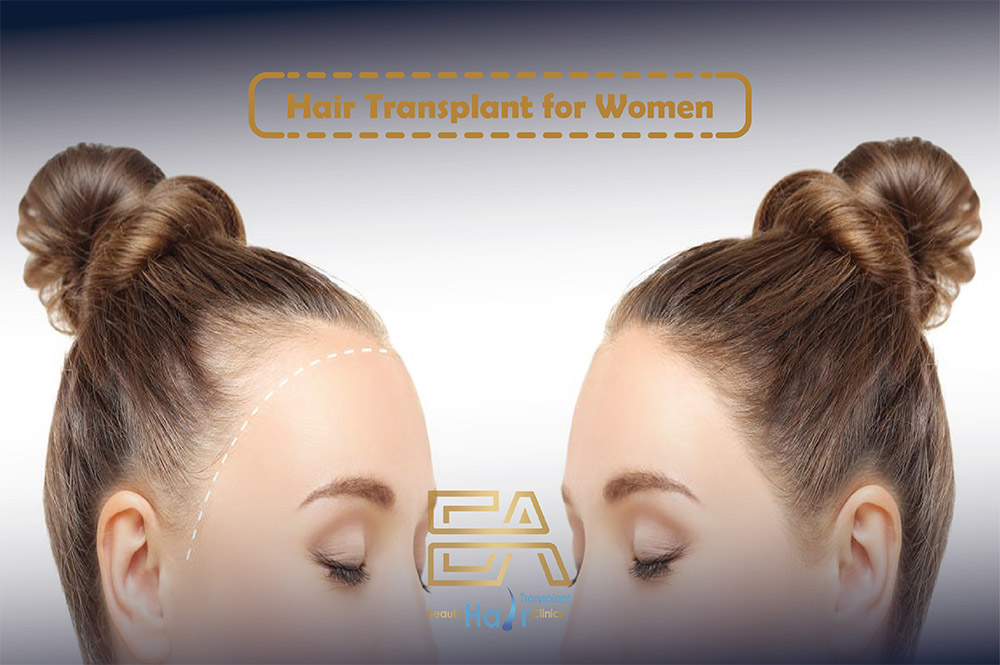Operation For Women’s Hair Transplant
Operation for Women's Hair Transplant
Hair loss is a problem that affects both men and women. According to statistics, 1 in 5 women will eventually experience hair loss.
Due to social expectations and how society views women, psychological effects of hair loss in women may be more severe. The significance of finding a long-lasting solution is further increased by the fact that average women are more self-aware than average men.

Women Losing Hair
Pregnancy, hormonal changes, stress, medications, thyroid issues, and long-term health issues are all potential causes of hair loss in women. Additionally, it can be seen gradually as a result of aging and genetics. There are many causes of hair loss.
40% of people who experience hair loss after the age of 40 are women, which is a higher percentage than would be expected. Women experience hair loss in different ways, so different transplantation techniques are preferred.
In contrast to men, women experience hair loss that begins in the middle and back of the head rather than on the frontal scalp. Women’s hair transplants therefore aim to boost the density of the hair that covers the face.
Men lose their hair in specific places, so it is possible to harvest hair follicles from those areas. It is more difficult to identify the donor area or areas in women because their hair loss patterns are typically less well-defined.

Techniques For Women Hairs Transplants
There are three distinct methods:
Hair and skin are removed from the donor area and transferred to the desired area using the FUT technique, which is the standard method for hair transplantation. The procedure may take three to four hours.6000 grafts are transferred using this method, leaving an 8–9 cm wide scar.
2 – FUE Technique: In this method, individual hair follicles are harvested and grown. In contrast to FUT, no skin is removed during this technique, so there won’t be a scar after the procedure. Depending on how many grafts are needed, this technique can take a certain amount of time.
3 – DHI Technique: Using a tool known as a Choi pen, this technique uses direct hair follicle transference to the desired area. This method is effective, especially in making the hair denser, and it doesn’t require shaving. The extracted follicles are implanted in 1-2 minutes. Additionally, laser technology is employed in hair transplantation, with consistent success. Women’s hair transplants result in many variations, so the doctor’s experience is crucial in deciding the best technique to use in order to achieve the best results.

Before Women's Hair Transplants
The patient’s medical history and information about their lifestyle are gathered by the doctor prior to the procedure in an effort to identify the causes of hair loss. It is crucial for the patient to be forthcoming and truthful with all of the information they provide because it will be used to determine the best course of action for their unique condition. The patient must also state what they hope to get out of the procedure. To manage expectations as effectively and realistically as possible, it is necessary to specifically discuss the expected outcomes.
Any chronic illnesses and other medical conditions must be disclosed by the patient to the medical expert. Especially anything having to do with coagulation or blood pressure.
Your doctor will perform a number of tests, particularly those that relate to anesthesia, and then start making preparations for the procedure. There’s no need to shave your entire head for this procedure.
Selecting the right hospital to perform the procedure is equally important, and Germany, Turkey & Afghanistan is one of the most successful nations for hair transplants. Due to the availability of all the necessary elements of this procedure, including a reasonable price, skilled practitioners, and a high success rate, 150–500 patients undergo hair transplantation each week in Germany, Turkey & Afghanistan.

Women's Hair Transplant Procedure
Men and women undergo the same hair transplant procedure in general, but the details and the application are different.
The procedure begins with the donor area’s hair follicles being sterilized. Next, the targeted area is localized anesthetized, and the procedure is carried out using the chosen technique (FUT, FUE, DHI). The procedure takes between three and six hours.


